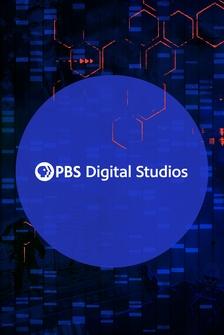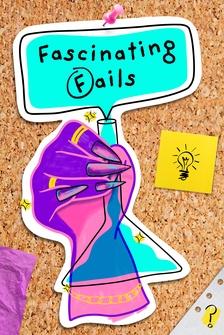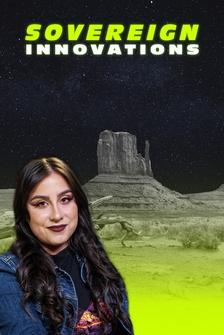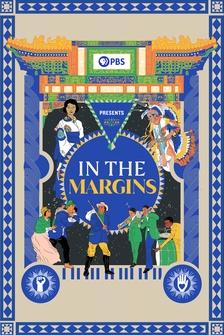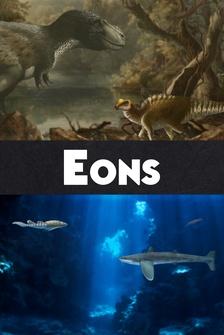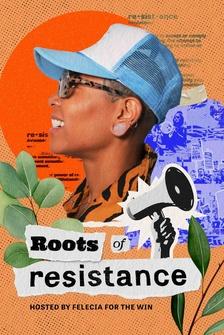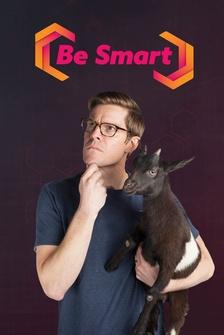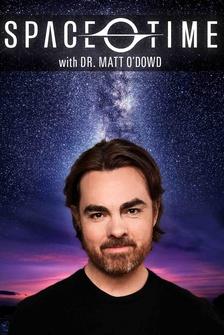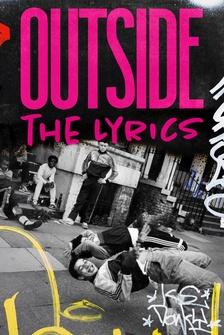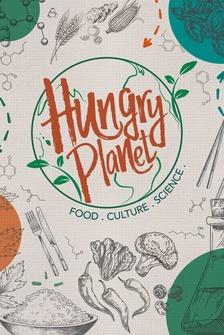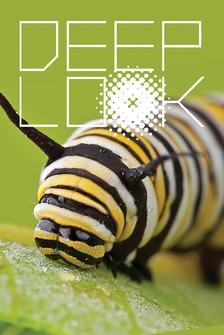(narrator) To you and me, these look like trucks.
And, well, technically that's true.
But on this patch of Oklahoma prairie, they're more like oversized sheep dogs, except the creatures they're rounding up are a little bigger than sheep.
They're bison.
Using 4-by-4s to chase bison might seem like a weird, new sport.
But what's happening here could actually be the key to resurrecting a lost ecosystem.
[sustained note] A long time ago, in the heart of the North American continent existed a vast sea of tall grasses and millions of bison.
This tallgrass prairie stretched from Canada to Texas, an area encompassing 14 present-day states.
But then--stop me if you've heard this story-- Europeans came with their guns and plows, and both the bison and the prairie disappeared.
As little as 5% of this original prairie exists today.
The largest remaining protected area of tallgrass prairie in the entire world is here in northeast Oklahoma.
This 40,000-acre expanse is known as the Tallgrass Prairie Preserve.
From horizon to horizon, it's all grass.
(speaker) These grasses are-- they're what we call "perennial grasses," so they live year to year.
And there have been reports of perennial grasses living as much as 50 years.
(narrator) Sam Fuhlendorf studies grassland ecology.
He's found these soil and plant communities are surprisingly complex.
Some of these grass's roots reach 15 feet deep, making them a crucial piece of Earth's carbon storage biosphere.
And there's more biological diversity here per square meter than in some tropical forests.
(Sam) We've tried to understand the way this system would have operated historically and restore it as closely as possible.
(narrator) Before it could be preserved, the prairie had to be restored.
You see, it didn't always look like this.
Not long ago, this was a cattle ranch.
Ranches prioritize economics over ecology, which in practice means putting as many animals on the land as possible for as long as possible.
That can lead to destructive overgrazing.
So how did this... turn into this?
It started with this.
(speaker) These grasslands evolved with grazing, principally by bison.
And so if you're trying to put Humpty back together again, you start with some of the bigger pieces, the more important pieces.
The bison were the primary historical grazer.
Boom.
Let's put those guys back.
(narrator) Bison were reintroduced to this preserve in 1993.
Since that time, the original herd of 300 has grown to upwards of 2,000 animals.
These bison love eating grasses and forage for up to 11 hours a day.
(Bob) They are essentially a stomach with four legs.
(narrator) You'd think all that eating would destroy the prairie, but these grasses evolved to cope with the grazing of migratory bison.
In fact, they're actually healthier for it.
Grazing bison keep certain plant species under control and allow others to flourish.
(Bob) They are kind of ecosystem engineers.
And so that's one of the principal reasons we bring them back and reintroduce them to these native prairies.
(narrator) This preserve is managed by the Nature Conservancy.
Today, Bob Hamilton and his team are bringing in the herd for medical checkups.
Dogs could get injured.
so instead they use trucks to lead the bison into the corral.
(Bob) You have to always be watching for the ones that are trying to cut, and turn, and blow past you.
Hey, hey!
(speaker) You can have 300 of them going, and all of a sudden, one cow's-- tries to dart out, and then the rest of them try to follow.
And so you just-- you never know.
It looks like you're in control, but you're not.
(Bob) At a point sometimes, you and your vehicle are in the middle of this swirl.
Yeah, it's just chaos, like a little bison bomb goes off.
And one of their really driving behaviors is this herd instinct.
They want to be with other bison.
They have this very synchronized movement.
And so it's like they're moving a big organism.
So as you're moving them, it's this real synchronized turning.
It's like a schooling fish.
[country music] (narrator) And these 2,000-pound patients don't care much for exams.
Hey, bud, it's OK. We all get nervous going to the doctor.
Who's my brave little guy?
(Bob) We're looking for any kind of injuries.
Are they still in good shape?
Are they stable?
If everything goes well, the animal is only confined for about 45 or 50 seconds.
Boom.
Then they're kicked out, and you're on to the next one.
They are kind of a quintessential wild creature.
They've never been domesticated.
And one of our policies is to respect as best we can the wildness of that species.
Our responsibility, as I see it, to the bison is to maintain their health and their proper impact on the prairie.
(narrator) And bison aren't the only thing these prairies need to survive.
They also crave fire.
Bob's team burns as much as a third of the preserve each year.
That may sound like a lot, but it mimics the ancient seasons of fire that were once common on these prairies.
(Bob) These native prairies have evolved with fire.
If you remove fire from the prairie, it fairly quickly converts to a woodland.
(Sam) Many people think fire destroys stuff.
But in some of the cases of landscapes like this, it eliminates the dormant vegetation, and it allows the new growth to do better than it would if the old growth had been there.
It kind of cleans the slate periodically and allows the prairie to truly express its growth and really be highly productive and very well suited to a bison.
(narrator) This prairie is thriving once again, proof that the recipe of wild bison plus seasonal fire actually works.
But OK, let's get real for a second.
We can't return all the Midwest to prairie or restore bison to their former glory.
But the biggest benefit of this experiment could be a bit of newfound insight.
By understanding how natural systems work, we can use that knowledge to restore them.
Here on the prairie, it turns out that the species of grazer might not be as important as the way they graze.
(Bob) If you manage cattle in a more wild-type environment, you can get a lot of the same ecological impacts as you can with bison.
(Sam) Cattle are almost never managed that way.
So it's like bison are allowed to be bison, and so that's what makes them really different from cattle.
(narrator) So allowing cattle to be a little more like bison could be one key to restoring damaged grasslands around the world.
(Bob) We do control the world now.
And so it's ultimately our decision on whether if some of these ecosystems are going to persist or not.
If we were to lose the prairie, we would lose an important part of our collective history.
Open space is freedom.
Ooh, man, it's freedom.
[acoustic guitar] Hey, guys, you want to hear a joke?
What did the buffalo say to their kid before they left for college?
"Bye son!"
Bison, get it?
Keep those comments coming.
We love reading them below every single video.
Keep liking, sharing these with your friends.
And make sure to subscribe here on PBS Terra so that you don't miss our next one.
All right, see you guys.
Accessibility provided by the U.S. Department of Education.




